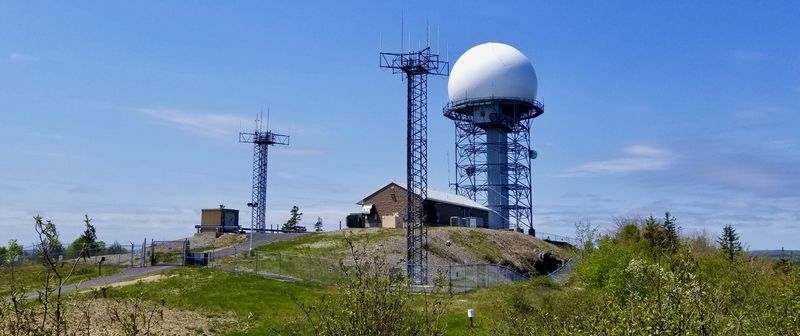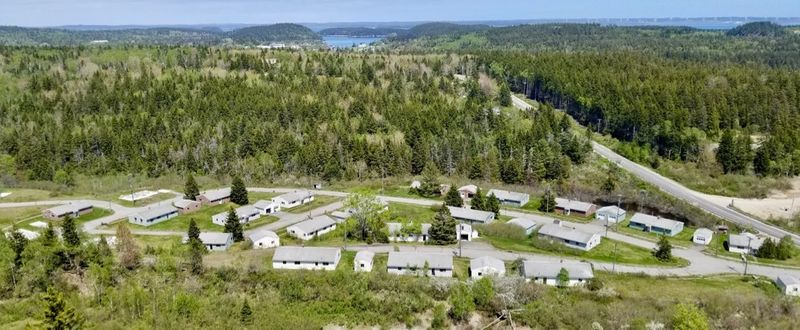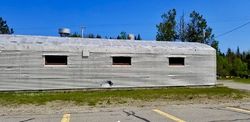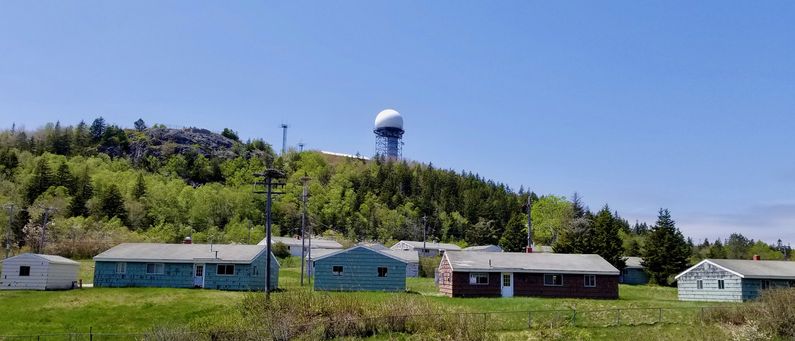Bucks Harbor Air Force Station
|
Bucks Harbor Air Force Station (1955-1979) - A Cold War Air Force Radar Station first established in 1955 near Bucks Harbor, Washington County, Maine. Named Bucks Harbor Air Force Station after the location. Initially assigned a Permanent ID of M-110, later a Sage ID of Z-110 and a JSS ID of J-54. Abandoned as an Air Force Station. The Former operations area now contains the Bucks Harbor FAA Radar Site. Assigned Location ID ME00025.
HistoryEstablished in 1955 and became operational in 1956 as Bucks Harbor Air Force Station manned by the 907th AC&W Squadron. The site was first designated as site M-111, one of forty-four Mobile radar stations in the first augmentation to the Permanent System radar sites. The original Permanent System radar sites were designated P-1 through P-85 and the first phase of mobile augmentation sites was designated M-87 through M-131. The station initially had both a Ground-Control Intercept (GCI) and an early warning mission. The early warning mission involved tracking and identifying all aircraft entering their airspace while the GCI mission involved guiding Air Force interceptors to any identified enemy aircraft. Controllers at the station vectored fighter aircraft at the correct course and speed to intercept enemy aircraft using voice commands via ground-to-air radio. As a part of the Manual Permanent Radar System, Bucks Harbor AFS was responsible to the Syracuse Manual Direction Center P-05 until the SAGE System became operational. Initial equipment included the MPS-11 search radar replaced in 1959 by an FPS-8/GPS-3. SAGE System TransitionThe transition of the manual GCI system to the automated SAGE system began with the installation of the FST-2 coordinate data transmitter and search radar upgrades. The FST-2 equipment digitized the radar returns and transmitted the digital returns to the SAGE direction center. Under the SAGE System, interceptor aircraft were directed to their targets by the direction center computers and controllers, greatly reducing the need for local controllers and equipment at every radar station. The FST-2 was a very large digital system using vacuum tube technology. Over 6900 vacuum tubes were used in each FST-2 requiring 21 air-conditioned cabinets, 40 tons of air conditioning, 43.5 kva of prime power, and usually a large new addition to the operations building. The FST-2B modification added two more cabinets but with newer solid-state (transistor) technology to process coded responses from aircraft transponders. SAGE System OperationThe site began operation as a SAGE site in 1960 initially feeding the Topsham SAGE Direction Center DC-05. Also in 1960 two FPS-6A height-finder radars were installed. By 1963 an FPS-24 search radar, an FPS-90 height-finder radar, and an FPS-6B height-finder radar had been installed. Bucks Harbor became a joint-use USAF/FAA facility circa 1965. With the closure of Topsham SAGE Direction Center DC-05 in 1969, control was shifted to Hancock SAGE Direction Center DC-03. ClosureBucks Harbor AFS and the 907th were deactivated in June 1979. Over the next two years, preparations were made to turn over part of the site to the FAA. Bucks Harbor FAA Radar Site Even after the closure of the Air Force Station in 1979, the Air Force continued to operate the FPS-90 height-finder radar until it was removed circa 1988. The FAA operated and maintained the FPS-66A search radar as well as the Common Digitizers, the FYQ-47 and later the CD-2. A FYQ-47 Common Digitizer was probably placed in service by February 1973 when the USAF/FAA FST-2 to FYQ-47 replacement program was completed. By 1990 the site was equipped with a Common Digitizer CD-2C and the FPS-66A search radar. The Bucks Harbor CD-2C was scheduled to receive an upgrade kit to implement three level weather data processing in April 1992. The FAA now operates an ARSR-4 radar as JSS site J-54, Bucks Harbor FAA Radar Site. The ARSR-4 radar was installed in the 1996-1999 time frame and the ATCBI-6A Beacon set was installed later. The radar site data is now available to the USAF/NORAD Battle Control System-Fixed (BCS-F) operations centers (EADS & WADS) as well as the FAA Boston ARTCC (ZBW) and adjacent ARTCCs. Other federal agencies have access to the data under the Homeland Security umbrella. Physical Plant The physical plant of the site was divided into the main operations site, a cantonment area, a housing area, and a radio site. The main site housed the operations buildings, the radar towers, and the backup generators. The cantonment area housed the enlisted barracks, the bachelor officer's quarters, the orderly room, the dining hall, the motor pool, and other support buildings. Apart from the main site was a small 27 unit housing area for married personnel. A separate radio site housed the radio equipment for directing aircraft intercepts.  The site was initially implemented as a mobile site with the cantonment area built with the temporary "Quonset Hut" style buildings. The main operations area was first equipped with mobile radar sets along with a standard operations building. Over the life of the site, most of the temporary buildings were replaced with permanent structures. The barracks and the dining hall were major replacements. The radar equipment was also changed to fixed station equipment and supplied with fixed towers and radomes. The FPS-24 search radar installation required a permanent 5-story concrete tower. Like most early radar stations, Bucks Harbor originally had a radio transmitter site and a separate radio receiver site used by local controllers for voice direction of fighter interceptors to their targets. With the SAGE System, the SAGE Direction centers had the primary task of directing intercepts and the local radio sites were reconfigured, usually into a single site that was known as the Ground to Air Transmitter Receiver (GATR) site. The GATR site communicated with the interceptors from either the local site or the SAGE direction center via voice commands and/or a digital data link.
Current StatusPart of the operations area of the former Air Force site is now an active FAA radar site. The 5-story concrete FPS-24 radar tower has been completely removed. The cantonment area site is now the Downeast Corrections Facility but that facility has been downsized and appears to be closing. The housing area homes are empty and deteriorating, some have been removed. Public access to part of the site is allowed along the road up past the FAA site where the base of a radar tower has become a local viewpoint. Turn right just before the corrections facility's main building and proceed up the hill past the FAA Site entrance to the viewpoint.
See Also:
Sources:
Links:
Visited: 28 May 2018
| |||||||||||||||||||||||||||||||||||||||
